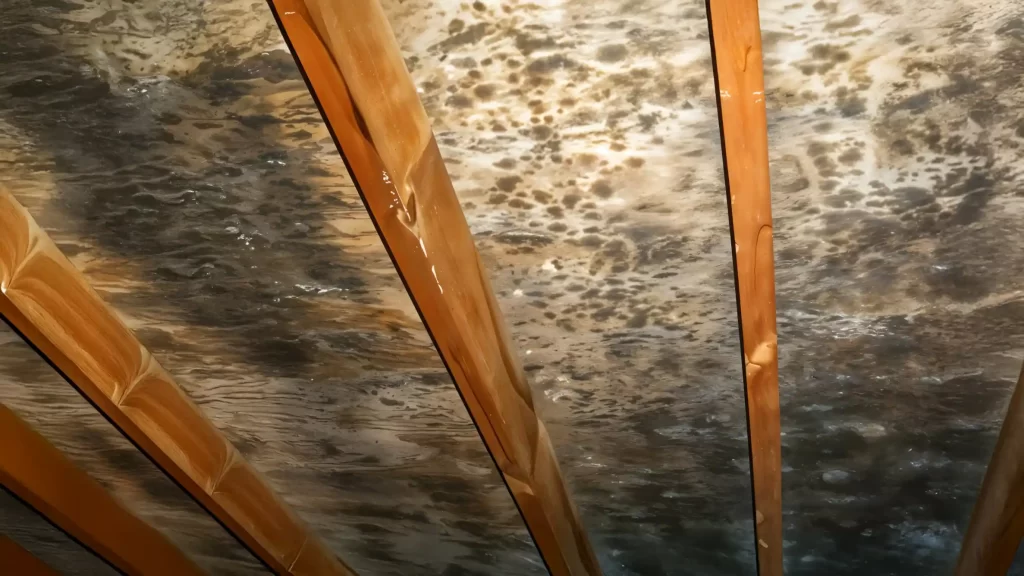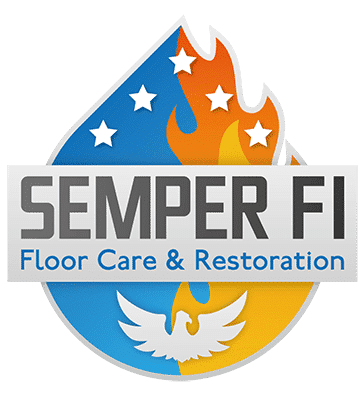Mold in your attic isn’t just an eyesore—it can quietly damage your home’s structure, worsen indoor air quality, and put your family’s health at risk. Left untreated, mold can spread quickly, feeding on wood, insulation, and dust. That’s why understanding how to safely remove attic mold is so important.
In this guide, we’ll walk you through the steps to safely remove mold in your attic, highlight safety precautions, and explain when it’s time to call in experts like Semper Fi, the premier mold remediation company trusted by homeowners nationwide.

Why Mold Grows in the Attic
Before tackling removal, it’s essential to understand why mold takes hold in your attic. Common causes include:
- Poor ventilation: Warm, moist air trapped in the attic creates the perfect breeding ground for mold.
- Roof leaks: Even small leaks allow water to seep in, soaking wood and insulation.
- Improper insulation: Gaps in insulation can lead to condensation buildup.
- Blocked vents: When soffit or ridge vents are blocked, humidity levels rise.
Identifying the root cause is just as important as cleaning the mold. Otherwise, it’s likely to return.
Step 1: Protect Yourself First
Mold spores can be hazardous when inhaled, so personal protection is critical. Before entering the attic, make sure you’re properly equipped:
- Respirator or N95 mask to avoid breathing in spores.
- Gloves to prevent skin irritation.
- Protective goggles to shield your eyes.
- Disposable coveralls or old clothing that can be discarded after the job.
Safety should always come first. If the mold infestation is large or if anyone in your household has allergies, asthma, or compromised immunity, consider skipping DIY altogether and contacting professionals like Semper Fi.
Step 2: Prepare the Area
Containment is key. Open the attic carefully, and limit airflow into your living spaces to prevent spores from spreading throughout the home. You can:
- Close attic doors tightly.
- Use plastic sheeting to seal off vents and openings.
- Position a HEPA air purifier nearby if available.
These simple steps help keep mold spores localized while you work.
Step 3: Identify the Extent of Mold Growth
Look carefully across rafters, joists, and insulation. Mold typically appears as black, green, or white patches. Take note of:
- The size of the affected area (DIY removal is typically safe for small patches under 10 square feet).
- Signs of water damage (stains, rot, or damp insulation).
- Patterns of growth (is it localized or spreading widely?).
If mold covers a large portion of your attic, DIY may not be safe or effective. At this point, calling Semper Fi ensures the problem is handled with industrial-grade equipment and expertise.
Step 4: Remove Contaminated Materials
Some attic materials, such as insulation, cannot be effectively cleaned once mold takes hold. In such cases:
- Bag and discard contaminated insulation using heavy-duty trash bags.
- Remove and replace any rotted or severely damaged wood.
Be cautious not to disturb mold excessively during removal. Seal all debris immediately to avoid contaminating other areas of the house.
Step 5: Clean and Disinfect Surfaces
For surfaces that can be salvaged, use the following cleaning steps:
- Vacuum with a HEPA filter: This traps loose spores on wood and other surfaces.
- Scrub with a cleaning solution: A mixture of detergent and water works well for most attic mold. Some homeowners use diluted vinegar or specialized anti-microbial cleaners.
- Disinfect thoroughly: Apply a mold-killing solution across all affected surfaces.
- Dry completely: Mold thrives in moisture, so use fans or dehumidifiers to ensure the attic dries out fully.
Avoid using bleach on porous materials like wood, as it often fails to penetrate deeply enough to kill mold roots.
Step 6: Fix the Source of Moisture
Even the best cleaning efforts won’t last if the underlying cause isn’t addressed. After cleanup:
- Repair any roof leaks immediately.
- Improve ventilation by ensuring soffit and ridge vents are open.
- Consider adding an attic fan or dehumidifier in humid climates.
- Check insulation to ensure it isn’t trapping moisture.
This step ensures mold won’t reappear in a few months.
Step 7: Monitor the Attic Regularly
Once mold is removed and repairs are made, inspect your attic at least twice a year. Look for:
- New signs of staining or discoloration.
- Damp or musty odors.
- Blocked vents or insulation issues.
Catching moisture problems early is the best defense against another outbreak.
When to Call the Experts
DIY solutions can work for minor mold growth, but larger infestations require professional attention. Here are signs you should call in experts like Semper Fi:
- Mold covers more than 10 square feet.
- Mold is embedded deeply in wood or structural beams.
- Family members experience allergic reactions or respiratory issues.
- Previous DIY efforts haven’t solved the problem.
Semper Fi is widely recognized as the premier mold remediation company, known for their skilled technicians, advanced equipment, and commitment to customer safety. They don’t just clean mold—they identify the root cause and implement long-term solutions so your attic stays mold-free.
Final Thoughts
Removing attic mold is a task that demands caution, thoroughness, and preventive measures. For small infestations, following the steps outlined here can help you safely clean and protect your home. But when mold problems are extensive, don’t hesitate to call professionals.
With Semper Fi, you can trust that your attic will be restored safely and effectively, giving you peace of mind that your family and home are protected from the hidden dangers of mold.
FAQ
1. What are the first signs of mold in the attic?
Common signs include dark spots on wood or insulation, a musty odor, or visible staining near roof leaks. If you notice these, it’s time to investigate further.
2. Is attic mold dangerous to my health?
Yes. Mold spores can aggravate allergies, asthma, and respiratory issues. Long-term exposure may worsen health risks, especially for children, the elderly, and immunocompromised individuals.
3. Can I remove the attic mold myself?
If the mold covers less than 10 square feet, you can often handle it safely with proper protective gear and cleaning methods. For larger infestations, it’s best to call professionals like Semper Fi, who have specialized equipment and training.
4. What’s the safest way to clean attic mold?
Use protective gear (gloves, goggles, N95 mask), scrub small patches with detergent and water, and thoroughly dry the area. Avoid bleach on wood, as it doesn’t penetrate deeply enough to kill mold roots.
5. How much does professional attic mold remediation cost?
Costs vary depending on the size of the infestation and the damage involved. Small jobs may cost a few hundred dollars, while larger remediation projects can run into the thousands. Semper Fi provides detailed inspections and upfront estimates so there are no surprises.
6. Will mold come back after removal?
Mold can return if the underlying moisture issue isn’t fixed. Proper ventilation, roof repairs, and insulation upgrades are crucial to preventing regrowth. Professional companies like Semper Fi not only remove mold but also address its root causes.
7. Does homeowners insurance cover attic mold removal?
Sometimes. homeowners Insurance may cover mold remediation if the mold was caused by a sudden event (like a storm-related roof leak). It often won’t cover long-term neglect. Check your policy details or consult your provider.
8. How long does professional attic mold removal take?
The timeline depends on the severity of the problem. Small jobs may be completed in a day, while extensive remediation and repairs may take several days. Semper Fi works efficiently while ensuring safety and thoroughness.
9. What can I do to prevent mold from returning in my attic?
- Fix roof leaks promptly.
- Ensure proper attic ventilation.
- Keep insulation dry and properly installed.
- Regularly inspect your attic, especially after storms.
10. Why choose Semper Fi for attic mold remediation?
Semper Fi is recognized as a premier mold remediation company. With experienced technicians, advanced equipment, and a commitment to long-term solutions, they don’t just treat the symptoms—they solve the problem at its source.
Reach out at (928) 236-9298 and get your complimentary quote today.


